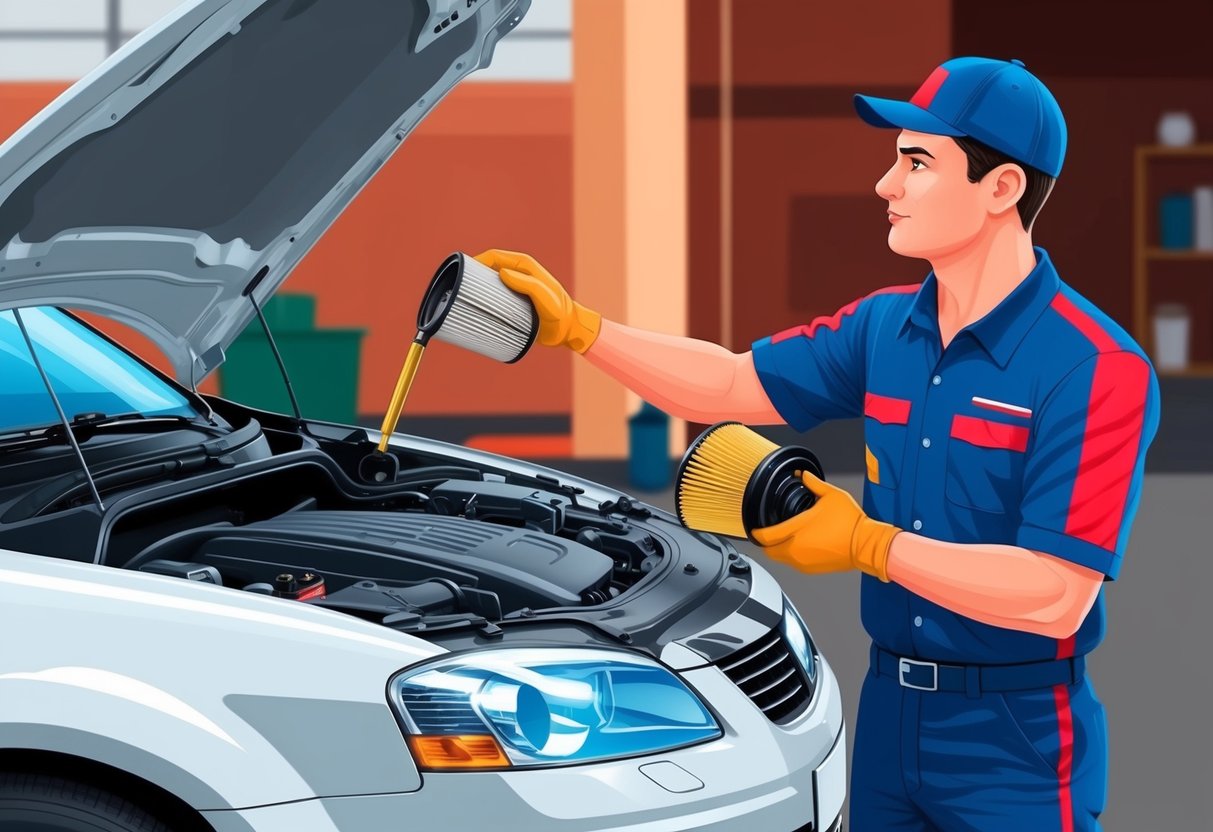
Regular maintenance routines are the single most effective strategy to extend your car’s lifespan and reduce costly repairs. By following a schedule that includes timely oil changes, fluid checks, tire rotations, and system inspections, drivers can keep their vehicles performing reliably for many years.
Attention to maintenance not only improves longevity but helps maintain safety and efficiency on the road.
Neglecting these essential practices leads to premature wear and unexpected breakdowns, often resulting in higher expenses and inconvenience. Responsible owners also benefit from enhanced fuel economy and a higher resale value, making regular car care an investment with long-term rewards.
A commitment to routine care, combined with good driving habits, proper storage, and prompt attention to any issues, is the foundation for vehicle health. Those who want their vehicles to last can find more in-depth guidance on essential steps for extending vehicle lifespan and maximizing the value of regular maintenance.
The Importance of Regular Car Maintenance
Routine car maintenance is essential for preserving vehicle reliability, minimizing unexpected expenses, and improving overall road safety. These regular practices directly influence the car’s long-term value, keeping systems working efficiently and lowering both immediate and future risks for owners.
Protecting Your Investment
A vehicle is often one of the most significant purchases an individual makes. Performing regular car maintenance—such as oil changes, tire rotations, fluid checks, and brake inspections—preserves engine performance and reduces the rate of wear on critical components.
When these services are completed on schedule, major systems last longer and maintain their optimal function. Well-kept maintenance records and service intervals can boost a vehicle’s resale value.
Prospective buyers prefer cars with documented routine maintenance because these vehicles are less likely to have hidden issues and are often more reliable. Keeping up with basic tasks like changing filters and monitoring tire pressure helps to extend the lifespan of the car, which can directly impact long-term ownership costs and protect your investment in it.
Reducing Long-Term Repair Costs
Neglecting routine maintenance often results in expensive repairs. Small issues—such as worn brake pads or low engine oil—can escalate into critical failures if left unchecked.
Simple preventive care, like inspecting hoses and belts, spot potential problems early, before they turn into major repairs. Addressing minor issues as they arise also means fewer surprises and lower repair bills over the lifespan of the car.
Sticking to a vehicle maintenance schedule reduces the likelihood of breakdowns, increases efficiency, and limits the risk of sudden part replacements. In the long run, regular maintenance helps prevent costly repairs that can strain a household budget.
Enhancing Safety on the Road
Routine vehicle maintenance directly supports safer driving conditions. Servicing brakes, tires, headlights, and steering systems ensures that the car operates correctly in diverse situations, from wet roads to emergency stops.
Skipping these checks increases the risk of failures that could lead to dangerous accidents. Replacing worn tires, keeping the battery in good condition, and ensuring that the lights are fully functional makes the vehicle less prone to common safety hazards.
According to automotive experts, up-to-date car maintenance reduces the likelihood of unexpected incidents and improves reliability for daily commutes or long trips. Focusing on scheduled car inspections is critical in ensuring safety on the road for both the driver and passengers.
How to Build a Comprehensive Maintenance Schedule
A well-structured maintenance schedule is crucial for safeguarding a vehicle’s performance and extending its lifespan. Drivers should consider manufacturer guidelines, their own driving habits, and reliable recordkeeping to make sure no essential routine maintenance task is overlooked.
Understanding Manufacturer Guidelines
Most vehicles come with an owner’s manual containing the factory-recommended maintenance schedule. These guidelines specify optimal intervals for oil changes, filter replacements, brake inspections, tire rotations, and other essential tasks.
Following the schedule outlined by the manufacturer not only preserves engine efficiency but also maintains warranty coverage and reduces the risk of costly repairs. The manual may include separate intervals for “normal” and “severe” driving conditions, such as frequent stop-and-go traffic or towing heavy loads.
Owners should evaluate which conditions apply and adjust their routine maintenance accordingly. The manufacturer’s instructions often highlight which maintenance schedule items are most crucial for specific vehicle models.
Adhering to these intervals ensures all critical components are regularly assessed and kept in good condition.
Creating a Personalized Plan
Beyond the owner’s manual, a personalized maintenance schedule considers a vehicle’s age, mileage, climate, and unique driving conditions. For example, those driving in extreme temperatures, dusty areas, or high-traffic environments may need more frequent fluid checks, brake inspections, or air filter changes.
To stay organized, drivers can use digital tools or mobile apps, such as reminders or scheduling software. A consistent plan makes it easier to keep up with routine maintenance, spot wear-and-tear early, and address minor issues before they become major problems.
Drivers should make a checklist of key tasks and assign them intervals—monthly, quarterly, bi-annually, or annually. This can include oil and coolant checks, tire pressure and rotation, brake pad inspections, and thorough fluid top-ups.
Referring to this comprehensive car maintenance guide can help drivers build a reliable routine tailored to their needs.
Utilizing Maintenance Records
Careful documentation of all completed maintenance work is a valuable practice. Maintenance records help verify that scheduled services were performed and can pinpoint patterns in recurring issues or components requiring replacement.
Maintaining up-to-date service logs—either on paper or digitally—serves as proof for warranty claims and can boost resale value by demonstrating responsible care. Many drivers organize their records by type and date, making it easy to track the next required service at a glance.
Detailed logs make it easier to communicate with mechanics, as they can quickly reference the type and timing of recent repairs. Well-maintained records ensure the vehicle sticks to its preventative car maintenance routines and allows for timely adjustments as the car’s needs change over time.